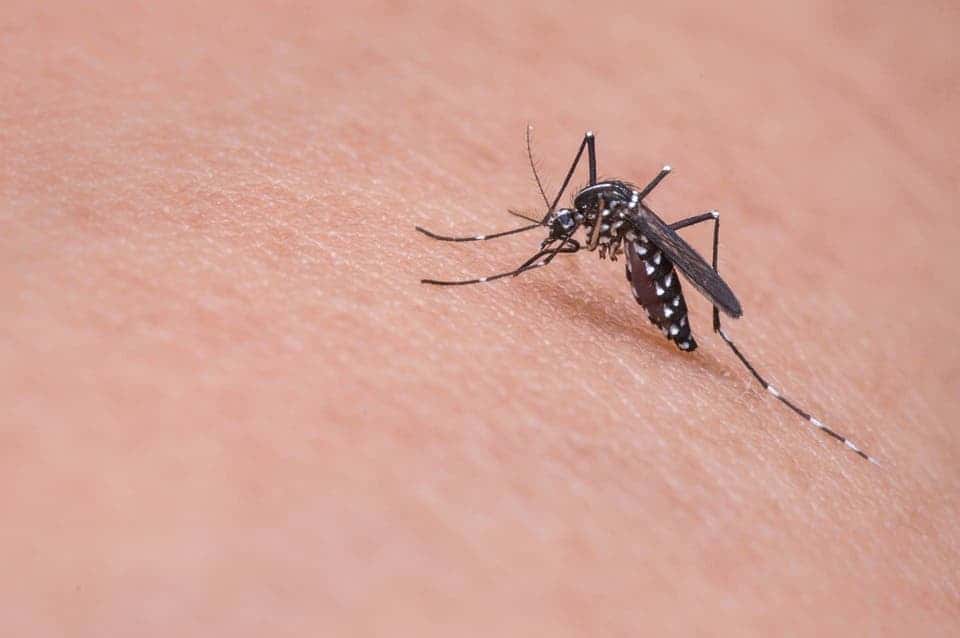
British researchers claim they have the first proof that microplastics are entering the food chain by air via mosquitoes. Insect larvae have been observed ingesting microplastic particles, which are transferred into the adult form. Whatever creature that devours the insect would then become contaminated with plastic, which goes up the food chain until the contamination can make its way back to humans, the source of the plastic pollution in the first place.
Biting microplastics
Microplastics are tiny plastic waste, ranging from 5 millimeters down to 100 nanometers in diameter. Since mass production of plastics began in the 1940s, microplastic contamination of the marine environment has been a growing problem.
Ultimately, microplastics travel up the food chain where they reach humans. A portion of consumer-grade mussels in Europe could contain about 90 microplastics, according to one study. Consumption is likely to vary greatly between nations and generations, but avid mussel eaters might eat up to 11,000 microplastics a year. Microplastics have also been found in canned fish, and even in sea salt. One kilogram can contain over 600 microplastics, meaning if you consume the maximum daily intake of 5 grams of salt, that’s equivalent to ingesting three microplastic particles a day.
[panel style=”panel-warning” title=”Microplastics” footer=””]
Microplastics can be categorized by their source. There are two main types, primary and secondary.
Primary microplastics are purposefully made to be that size. They were created by the manufacturer to be tiny for a particular purpose. The one that you have probably heard about the most are microbeads — little plastic spheres used in face washes, cosmetics, and toothpaste to exfoliate or scrub.
Secondary microplastics are bits of plastic that break down from larger pieces. Weathering, such as from waves, sunlight, or other physical stress, breaks the plastic into smaller pieces. Usually, it originates from waste that wasn’t managed properly.
[/panel]
Now, scientists have uncovered a new source for microplastic pollution in the global food chain. Researchers at the University of Reading observed how mosquito larvae were ingesting microplastics then passing them on through their life cycle, they reported in the journal Biology Letters. For instance, mosquitoes are eaten by birds, bats, and spiders, all of which are preyed upon in turn by other animals.
“The significance is that this is quite possibly widespread,” Amanda Callaghan, biological scientist at Reading, said in a statement.
“We were just looking at mosquitoes as an example but there are lots of insects that live in water and have the same life-cycle with larvae that eat things in water and then emerge as adults.”
[panel style=”panel-success” title=”Why microplatic pollution is a huge environmental concern” footer=””]
Microplastics never dissolve and stay in the ocean forever. Plastic does not biodegrade because it is new to the environment and bacteria have not evolved to break down the carbon-carbon links found in plastic. Plastic can constantly be broken down into smaller pieces but will always remain there. Only if and when bacteria evolve the ability to break down plastic on a large scale (there have been some isolated cases) will the plastic be biodegraded. Let’s not count on that. Major changes need to follow on an industrial (such as for fleeces and tires) and governmental level (such as laws for managing ocean waste).
[/panel]
Although the mosquito larvae were observed maturing into adulthood in laboratory conditions, the researchers are confident that the same microplastic transfer is happening in the wild.
How much harm microplastics actually do to humans is still an open question. These recent findings, however, suggest that the microplastic problem is extremely broad and complex because the pollution has permeated virtually all creatures and environments.
In order to tackle microplastic pollution, some countries have banned certain sources of primary microplastics such as microbeads. Secondary microplastics, however, account for the vast majority of such pollution and a clear-cut solution is not yet in sight.






